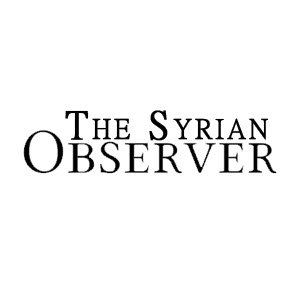In Brief
Mohamad Nassif Kheir Beik is now the Syrian assistant vice-president, but spent most of his life as an intelligence officer. Nassif, better known as Abu Wael (Wael’s father), enjoys a special relationship with Assad that makes him one of the closest political and security advisers to the Syrian president, on account of him being a veteran of the era of President Hafez al-Assad. According to analysts, Nassif plays a vital role in drawing the Syrian political strategy.
Background
Nassif was born in the village of Allaqba, near Missiaf, west of Hama. He comes from a well-established Alawite family. He went to the Military School and graduated as a first lieutenant. He has served with the former President Hafez al-Assad and former Minister of Defense Mustafa Tlass. When Assad executed his coup in 1970, Nassif moved to the General Intelligence Directorate (GID). Nassif played a key role in getting rid of Assad’s opponents in the first years of his rule.
Nassif established and headed a strong branch within GID – the Internal Affairs. He remained in this position until his retirement, and was replaced by Bahjat Suleiman. In addition to his position, Assad the father always commissioned special missions to him. He was in charge of the Lebanese Shiite portfolio, and played a role in raising Assad’s sons, the late Bassel, Bashar and Maher.
In 1984, Nassif played a vital role in defending Hafez al-Assad, who was very sick, against his brother Rifaat, who tried to lead a coup against him.
Assistant vice-president
Many thought that Nassif’s political life had reached an end when he retired. However, only a few months after his retirement, President Assad created a new post for him: assistant vice-president.
Assad had appointed Farouk al-Sharaa as vice-president a few months after the former vice-president Abdulhalim Khaddam had defected. Some saw his appointment as vice-president as a demotion, since he was expected to have less of a public role in Syrian politics and to lose contact with many diplomats and world leaders. The vice-president in Syria is generally a ceremonial role. It was widely believed that appointing Nassif as assistant vice-president was to weaken the influence of Sharaa, if he had any.
Like most intelligence officers, Nassif was very discrete and did not have a private life. His assistants say that he lived in his office. He was among the few who could talk to the late Assad at anytime. And he retained this privilege with his son Bashar.
In the late seventies, he was commissioned the job of eliminating the new leftist groups. He personally led campaigns against The Communist Action League, the Workers Union and the Workers Communist Party, and carried out the investigation with them. However, with the outbreak of the Muslim Brothers’ rebellion against Assad in 1979, he shifted gears and became the top security officer to combat the Muslim Brotherhood.
The Internal Affairs branch was famous for using the worst torture tools, and many former prisoners, including famous writers and intellectuals, spoke about the torture they received in that branch.
In addition to the internal affairs, Nassif was in charge of the Shiite portfolio. He enjoyed good relations with the Lebanese legend, Shiite leader Moussa al-Sadr, who disappeared after visiting Libya’s Kaddafi in 1978, and the Iranian Shiite leader Tabatabaei.
The Syrian revolution
When the Syrian revolution broke out in March 2011, Nassif was an active proponent of finding a political solution to the crisis. He shared this mission with the president’s political advisor Butheina Shaban. He met with opposition figures, including one of his relatives, who works for a renowned human rights group in the country. He also met Western ambassadors, including the United States ambassador, in an attempt to contain the crisis.
These efforts however collapsed after the regime opted for a security (military) solution.
Relations with the United States
A pro-government website, Syria- Politic, says that Nassif travelled to the US during his intelligence career and after he retired. Damascus would say in these cases that Nassif travelled to the US for medical treatment, but some people say that Nassif’s illness is a ‘political one rather than a medical one.’ The website adds that Nassif was behind arranging historical meetings between Syrians and Americans, including the meetings between President Hafez al-Assad and President Clinton in the 1990s.
The website also attributes the EU siege lifting in the late 2000s to Nassif’s efforts and visits to European capitals.
Other sources: Al-Arabiya TV, BBC, Al-Shiraa Weekly
......


